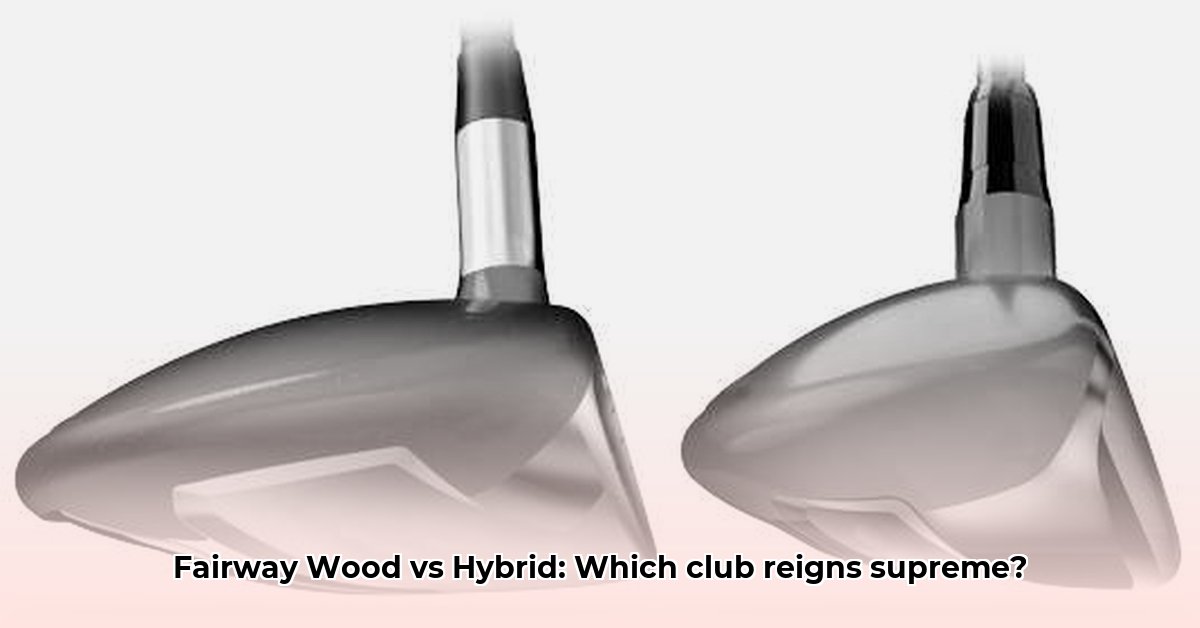Selecting the right clubs is essential in golf, and the choice between fairway woods and hybrids can be a challenge for golfers of all skill levels. This comprehensive guide breaks down the key differences between these clubs, helping you make informed decisions tailored to your game. We will explore distance, forgiveness, launch angle, and spin, as well as the emerging category of utility woods. Whether you are a beginner or a seasoned player looking to optimize your club selection, this guide will provide the knowledge needed to improve your distance, accuracy, and overall performance on the course.
Understanding Fairway Woods and Hybrids
Fairway woods and hybrids serve distinct purposes in a golfer’s bag, and understanding their characteristics is crucial for developing an effective golf equipment strategy. Fairway woods are designed for long-distance shots, typically from the fairway or off the tee, while hybrids blend the features of fairway woods and long irons, offering versatility and forgiveness.
Distance: Maximizing Yardage with Fairway Woods and Hybrids
Distance is a fundamental consideration when choosing between fairway woods and hybrids. Generally, fairway woods provide greater distance, particularly off the tee, due to their larger clubheads and longer shafts. However, the distance gap narrows when hitting approach shots from the fairway. Hybrids can be more forgiving and easier to hit consistently, potentially resulting in comparable or even greater distances for some golfers, especially on less-than-perfect strikes.
According to data from Arccos, amateur golfers across all handicap groups hit 3-woods farther than 2-hybrids by an average of 15.6 yards off the tee. However, this difference decreases to just 4 yards on approach shots for 0-20 handicappers, while 20+ handicappers actually hit 2-hybrids one yard farther 1.
When comparing 5-woods and 3-hybrids, Arccos data reveals that amateurs hit 5-wood tee shots 5-9 yards farther than 3-hybrids, except for 0-5 handicappers who achieve similar distances with both clubs. Interestingly, all other handicap groups hit 3-hybrid approach shots 2-9 yards farther than 5-woods 1.
These statistics emphasize the importance of considering the specific situation and your individual skill level when assessing distance potential.
Forgiveness: Minimizing the Impact of Off-Center Hits
Forgiveness is a critical factor for golfers of all abilities, as it determines how well a club performs on off-center hits. Hybrids generally offer greater forgiveness than fairway woods due to their smaller clubheads and deeper center of gravity. This design makes hybrids more resistant to twisting on impact, resulting in straighter and more consistent shots, even when the ball is not struck perfectly.
Fairway woods, with their larger clubheads, require more precise contact to achieve optimal results. While modern fairway woods incorporate features like adjustable weights and face cup technology to enhance forgiveness, they still demand a higher level of skill and consistency compared to hybrids.
Launch Angle and Spin: Optimizing Ball Flight for Different Situations
Launch angle and spin rate significantly influence ball flight and distance. Hybrids typically produce a higher launch angle and more spin than fairway woods, resulting in a steeper descent angle and increased stopping power on the greens. This makes hybrids a preferred choice for approach shots, particularly when targeting tucked pins or firm greens.
Fairway woods, with their lower launch angle and reduced spin, generate a more penetrating ball flight with greater roll. This can be advantageous on longer shots from the tee or fairway, where maximizing distance is the primary goal. However, the lower ball flight may be less effective in windy conditions or when trying to hold the green on approach shots.
Matching Clubs to Skill Level and Handicap
The decision between fairway woods and hybrids should be based on your skill level, handicap, and playing style. As a general guideline:
-
Beginner/High Handicap: Focus on hybrids for their forgiveness and ease of use, replacing long irons which are more difficult to hit consistently.
-
Mid-Handicap: Strategically incorporate both fairway woods and hybrids to fill distance gaps and provide versatility in different situations.
-
Low-Handicap: Primarily rely on fairway woods for maximizing distance on longer shots, using hybrids for specialized shots or challenging lies.
“For the average golfer, say somewhere in the range of an 8-15 handicap, carrying only a 3-wood and 3-hybrid is appropriate,” according to UnderParGoals 2.
Ultimately, the best approach is to experiment with different club combinations and determine which setup provides the most consistent and reliable results for your game.
Utility Woods: Bridging the Gap Between Fairway Woods and Hybrids
Utility woods represent a relatively new category of clubs designed to combine the best features of fairway woods and hybrids. These clubs typically feature a larger clubhead than hybrids but a shorter shaft than fairway woods, offering a balance of distance, forgiveness, and control.
Utility woods are often a good choice for golfers seeking a versatile club that can be used off the tee, from the fairway, or even from the rough. They provide a higher launch angle and more spin than fairway woods, making them easier to hit and control, while still offering greater distance than hybrids.
Callaway’s Apex UW (Utility Wood), co-created with Phil Mickelson, exemplifies this category, offering a blend of fairway wood distance and hybrid-like control 3.
Experimentation and Professional Club Fitting
The most effective way to determine the ideal combination of fairway woods and hybrids for your game is through experimentation and professional club fitting. A qualified club fitter can analyze your swing characteristics, ball flight data, and course conditions to recommend the optimal club setup for your individual needs.
During a club fitting, you will have the opportunity to test different clubs and shaft combinations, allowing you to experience firsthand the differences in distance, forgiveness, launch angle, and spin. The fitter will also ensure that your clubs are properly lofted and lie-angled to maximize your performance.
Adapting to Course Conditions
Course conditions can significantly impact the performance of fairway woods and hybrids. On tight courses with small greens, hybrids may be preferred for their accuracy and stopping power. Conversely, on wide-open courses with large greens, fairway woods can help you maximize distance and reach the greens in fewer strokes.
Windy conditions can also affect club selection. Fairway woods, with their lower ball flight, are less susceptible to wind interference than hybrids, which tend to launch the ball higher.
By considering the course conditions and adapting your club selection accordingly, you can optimize your performance and improve your scores.
Conclusion
Choosing between fairway woods and hybrids is a personal decision that depends on your skill level, playing style, and course conditions. By understanding the key differences between these clubs and experimenting with different combinations, you can create a club setup that complements your game and helps you achieve your full potential on the course. Whether you prioritize distance, forgiveness, or versatility, the right fairway wood and hybrid combination can unlock your best golf performance.
- Unforgettable: Talking Stick Golf Club Review – Desert Golfing Redefined - November 17, 2025
- Discover Talega Golf Club: Championship Golf & Spanish Hospitality Awaits! - November 15, 2025
- Is Strawberry Farms Golf Club Orange County’s Best Kept Secret? - November 13, 2025









